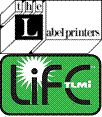
Excerpts from: Greenwashing: Sustainability's Dirty Little Secret
A very thought provoking, and well researched, article from My Print Resources (Joann Whitcher) - click on this link for the full text of the article
And for good reason: there is growing conventional wisdom that if you distribute something digitally, it is more environmentally friendly than distributing it on paper. From for-profit corporations to non-profits, to competing digital alternatives, print is being used as a foil to advance a paperless transformation, says Don Carli, senior research fellow with The Institute for Sustainable Communication, a nonprofit which looks to bring awareness and action to the sustainable use of print and digital media.Within the graphic arts community, the term greenwashing (using unsubstantiated, nonscientific environmental claims—often not true—to promote a product or service) can cause an avalanche of righteous indignation.
However, like pretty much every issue encountered in life as an adult, the issue is far from black and white.
Here’s the situation, in a nutshell: On the one hand, we have the companies and organizations that stand to benefit, from a financial perspective, from a transformation to a paperless workflow. These include Internet-based companies that want consumers to use their services (more about that later) to utilities, banks, etc., that would much rather not spend the money required to mail a bill or letter to their customers.
On the other, we have the graphic arts companies—the printers, paper mills, and software and hardware vendors that benefit from the ongoing use of paper products to deliver messages to consumers.
In the murky middle is the actual environmental impact that occurs to produce an email message vs. a paper bill, for example. It is here where greenwashing’s greatest sin(s) can be found; without scientific-based information and a real understanding of the products or services life cycle, no one benefits.
According to Carli, Phil Riebel, president and COO of Two Sides U.S., Inc., and others involved in the discussion, digital technologies and paper each have an impact on the environment. Different impacts, but each can be potentially as bad (or good) as the other, depending on how the individual companies, as well as industries as a whole, respond to that impact.
“In large part we don’t readily understand the life cycle of the products and services that we are talking about,” says Carli.
---------------------------------
Tree-free Paper Joins the Fray
One marketing mistake Riebel is seeing right now within the graphic arts community involves the promotion of paper products that are tree-free, made with recycled fiber or agricultural waste. “Companies making these products are suggesting that they are better for the environment than paper made with trees,” says Riebel. “But much of the paper in use today is made from trees that are coming from managed forests, and that are responsibly sourced.”
The marketing departments that are making these claims are stepping into an area that resembles greenwashing, says Riebel.
“We should be promoting all the different fibers as a sustainable alternative; we shouldn’t be pinning tree-free fibers against wood,” says Riebel. “One product is not necessarily better for the environment—it depends so much on the life cycle of these products. Plus, it sends the wrong message that using trees are a bad thing. If you get your paper from a responsible source, from a company that is using a well-managed, sustainable forest, if you get paper with the highest level of certification, then you are helping to promote the longevity of the forest and of trees.”
--------------------------------------
Now, however, there are government guidelines, issued by the Federal Trade Commission, addressing these kinds of broad, general, non-specific environmental claims and the widespread substantiation of these claims.
The Guides for the Use of Environmental Marketing Claims, also known as the Green Guides, offer rules to the marketer regarding advertising, promotional material, and all other forms of marketing. It specifically calls to task companies that make general, broad, unspecific claims regarding the environmental attributes of a package, product or service.
Claims have to be substantiated with credible and scientific evidentiary support. Brands making these non-credible claims are subject to a series of consequences, including fines and other actions by the FTC that will not only cause an advertiser embarrassment but can also leave the brand open to litigation. Challenges to a brand’s advertising claims can be made by literally anyone who believes that the advertising could be construed as misleading or false by consumers.
Additionally, false or misleading ads—including those touting environmental claims—can be reported to the Better Business Bureau’s National Advertising Division. If a company receives a complaint, the BBB will assemble an expert panel that will review whether or not the alleged ad could be perceived as misleading to consumers.
“It’s a confidential process,” explains Carli, “that doesn’t necessarily engage attorneys. There are no fines or legal findings or convictions.” However, if found “guilty,” the advertiser will receive a letter from the NAD requesting that the false claims in the ads be changed. Carli reports that there is a better than 90 percent compliance by those receiving a letter from the NAD, which does have a standing agreement with the FTC to turn over recalcitrant advertisers to the government agency.
Further Resources:
http://twosides.us
http://www.sustainablecommunication.org/
